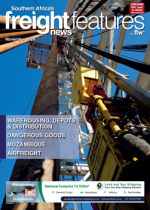The transportation of dangerous goods by road in South Africa faces numerous challenges that encompass regulatory, operational, environmental and socioeconomic dimensions, according to Oliver Naidoo, managing director of JC Auditors. One of the major challenges, he said, was inconsistent enforcement of regulations across different provinces and municipalities. "While the regulations governing the transport of dangerous goods are clear, their enforcement varies significantly," Naidoo told Freight News. "This lack of consistency often results in non-compliance by certain operators, which raises the risk of accidents and hazardous incidents."Another significant hurdle in the sector is that of inadequate driver training. "Effective training is critical for drivers handling hazardous materials, but gaps in training, especially regarding emergency response and legal compliance, affect the competence of drivers across the industry," he said.Driver shortageAdditionally, the shortage of qualified drivers, particularly those skilled in transporting dangerous goods, remains an ongoing concern. "The lack of skilled drivers not only impacts safety but also limits the overall capacity of the logistics sector to handle dangerous goods efficiently.”Poor road conditions, particularly on secondary and municipal routes, are a further challenge. Naidoo said potholes, inadequate signage, and a lack of maintenance increased the hazards associated with transporting dangerous goods. "The state of many roads makes transporting these goods even more dangerous, increasing the risk of accidents," he said.The lack of adequate facilities specifically designed for hazardous goods also presents a problem. "There are insufficient rest areas, emergency stops and infrastructure to manage spills or other emergencies effectively. This deficiency creates significant risks in case of incidents involving dangerous goods," he added.Theft and hijacking are still two major concerns for the dangerous goods sector. "Trucks carrying high-value dangerous goods like chemicals, fuel and explosives are frequent targets for criminal activities. This not only endangers drivers but also significantly increases the risk of these hazardous materials being m i sha nd le d."Environmental risksAccidents involving dangerous goods pose severe environmental risks, and South Africa's high road accident rate exacerbates this. "Flammable or toxic substances can cause significant environmental contamination and public health hazards if accidents occur. The country's high accident rate makes this an ongoing threat." According to Naidoo, the limitations of emergency response capabilities in South Africa, particularly in remote areas, can also not be overlooked when moving dangerous and hazardous cargo. "In the event of an accident, the emergency response is often slow and under-resourced," he said. "Local authorities and first responders frequently lack the necessary equipment and expertise to contain hazardous materials effectively, leading to prolonged exposure and environmental damage."Naidoo emphasised the importance of complying with and adhering to standards and regulations. “Standards play a foundational role in the safe handling, storage and transportation of this type of cargo. They provide clear guidelines for businesses to follow, ensuring that both safety and environmental protection are prioritised. Standards such as ISO 45001 (Occupational Health and Safety) and ISO 14001 (Environmental Management Systems) help companies mitigate risks related to dangerous goods.Safer working conditions“In South Africa, SANS 10228 and SANS 10231 are crucial as they align local practices with global standards, ensuring businesses remain competitive and compliant when trading internationally. These standards also ensure that companies stay in line with the National Road Traffic Act and Occupational Health and Safety Act, creating safer working conditions and preventing costly accidents.”He said the movement of dangerous goods was an inherently high-risk activity and the consequences of non-compliance could be catastrophic, both in terms of human safety and environmental damage. “LV

